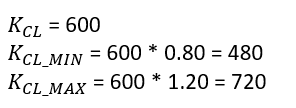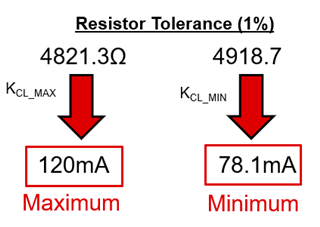Tool/software:
Hi,
I would like to understand better the current limit accuracy of TPS1H000-Q1 device.
It is stated in the datasheet as +-20%:
- Do you have a graph and minimum/maximum values for K(cl) and Vcl(th) parameters over temperature?
- Current limit depends on the external Rcl resistor. Does the +-20% consider the tolerance of the resistor or is +-20% assuming a nominal value?
In general I would like to understand where this tolerance is coming from and if it can be improved.





